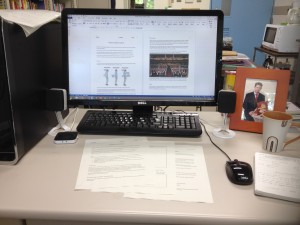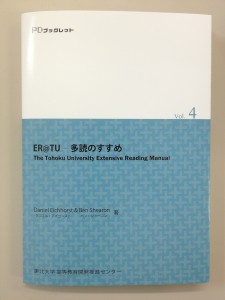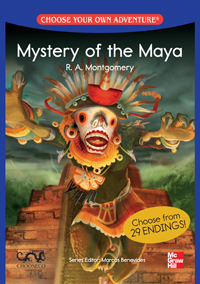The Infantilization of University Students
I had a bit of a meltdown yesterday.
I’ve been under a bit of stress at work recently (admin issues I am not going to go into), which probably contributed to my reaction to my first period class yesterday morning.
Ten students were late, drifting in during the first five minutes of the class (another three turned up later).
For my class, I ask students to collect the work I return to them before the bell and make sure they are ready to start on time (I make sure I am there ten to fifteen minutes early to set up). We then normally finish five to ten minutes early.
Yesterday, I let the late students take their papers and sit down. I didn’t say anything for a minute or so.
Then I let them know I was annoyed. In a mixture of Japanese and English (I rarely speak Japanese in class, and only do so to make a point), I explained the following in a firm way without shouting 🙂
- The class starts when the chime goes at 8:50
- I expect them to be ready to start at that time
- For this many people to be casually late is completely unacceptable
- From next week, if you are late I am just going to send you home
- If you can’t come on time, don’t come
After which I switched back to my usual relaxed self and conducted the rest of the class normally.
The incident got me thinking though. I always end up thinking about things I do differently, especially when they are unplanned as this was.
I think it will work, with my students, at my university. They are good students, I’m not asking anything unreasonably, and the university pretty much lets teachers lay down the law.
The thing is, I would never have done anything like that with a class of adults, in any setting. And my students are adults, at least in the UK. Most of the second-year class yesterday are also legally adults in Japan. But I treated them like a junior high school class.
I often hear colleagues refer to university students as ‘kids’, and I used to make a point of not doing so myself. Recently, though, I have noticed the word creeping into my own conversations too.
I wonder if we are infantilizing university students? After all, universities in Japan are basically an extension of high school, with the same packed schedule, the same lecture-style teaching approach, and the same focus on tests, tests, tests.
Do the students behave childishly because they are childish or because we treat them like children?
I don’t have the answer to this, but I wonder about it sometimes…
Anyone else teach at a Japanese university? Would changing institutional and teacher expectations improve things?
conference curriculum extensive reading high school presentations university
by sendaiben
leave a comment
Step-by-step Extensive Reading Program Development
This is my workshop from the JALT national conference 2013: Step-by-step ER Program Development.
If you are interested in the topic, you can still get a free copy of our bilingual handbook for teachers here.
curriculum expectations language courses materials presentations publishing textbooks university
by sendaiben
leave a comment
Creating new teaching material
This semester I am working on a new presentation textbook for my classes here at Tohoku University (okay, so I am also hoping I will be able to sell it to a publisher eventually too), and thought it might be interesting to write a little about how that is turning out. Experienced material developers probably won’t get much out of this, but if you are just starting out like I am, or have yet to start, you might find something useful.
My desk at work. Note the all-important coffee cup and blank notebook -I find it really helpful to explore ideas on paper before starting work on the computer.
For my presentation course, I was provided with some fairly rigid constraints: too many students (one class of 32 and one of 25), too few classes (maximum of 14, more like 13 once the first one is used up for orientation), and a not-quite perfect classroom (it’s a little too small for group work). However, this is actually helpful, as it provides space in which to work. Having complete free reign paralyses me.
My project is very much a work in progress at the moment, but here are the major steps so far:
- determine the goals of the course
- decide on topics to include, and the order to teach them in
- establish a class routine
- figure out what materials to create for each class
- write the materials
- scribble over the materials in red pen after class with corrections and ideas
I have realised those four elements in bold are the foundation of a class, and getting them straight is probably 90% of the work. Now that they are done, and in great contrast to previous courses I have designed, it’s pretty easy to sit down each week and plan my classes.
Right now I am mainly trying to get the content and the activities right, and not worrying too much about design.
Has anyone successfully completed a project like this? Am I missing anything?
curriculum extensive reading materials school management teaching theory university
by sendaiben
2 comments
More copies of the ER@TU Manual
I am very pleased to announce that it is now possible to get more copies of the Tohoku University Extensive Reading Manual.
Just send an email to the Center for Professional Development and they should be able to send you a copy.
curriculum EFL extensive reading graded readers language courses Language learning materials readers Reading teaching university
by sendaiben
6 comments
Choose Your Own Adventure readers -in class!
Today I am going to introduce a new activity I have been doing with extensive reading classes here at Tohoku University this semester. Our ER classes consist of approximately 45 minutes of silent reading and 45 minutes of supplementary activities including speaking, listening, and writing.
One activity that students enjoyed was reading some of the Choose Your Own Adventure readers in groups (I got the idea from Marcos Benevides).
Background Info
The Choose Your Own Adventure books (CYOA from now on) were popular when I was in school. They consist of books where the reader is given choices and the story develops differently based on those choices, up until an ending is reached. Some endings are good and some are bad. It’s kind of like a computer or role-playing game.
The CYOA readers are published by McGraw-Hill Education, and consist of 30 titles over three levels (500, 700, and 900 headwords). I used this in-class reading activity twice, once with Mystery of the Maya, and once with Cup of Death. Both are at the 500 headword level.
Procedure
The activity takes 30-35 minutes. First, introduce the concept of gamebooks to the students and walk them through the ‘read a page, decide on a course of action, go to the next page’ dynamic.
Assign the students to random groups (we found pairs and groups of three work best, as larger groups mean each student has too little to do). Explain that each group member will in turn read a page, the group will make the decision, and the book will be passed to the next member. This will continue until an ending is reached. If groups finish early they should go back and try to get another ending.
The teacher then reads the first page to the class before distributing one book to each group. Once a group has their book, they can start.
Results
We did this activity twice with about a dozen classes. Students actively read, listened, and discussed options for the whole time the activity went on. Many students enjoyed the activity and were clearly happy when teachers introduced the second book (three weeks after the first one). The highly structured nature of the activity makes it easy for students to participate.
Evaluation
This is a great activity to do two or three times a semester. It would be possible to base an entire course around reading CYOA books, but I suspect the novelty might wear off. Of course, as with any activity, not all students enjoyed it to the same extent. In terms of materials, one class set can be shared among several teachers.
The best thing about this activity is that it really brings out the meaning in the books: students have to understand the text in order to choose their next action.
Improvements
1. The content of each book in the CYOA series varies considerably. Our students had some trouble with the Mayan setting, so it might have been useful to pre-teach some of the background, the geography, and the history. This could be done in a few minutes. Going through the proper nouns in the book would also help students read more smoothly.
2. Doing the exercise in pairs gives more reading/speaking time to each student.
3. It is not necessary to have class sets of each book: the same activity could be done with each group/pair reading a different book (of course, pre-teaching and having the teacher read the first page would not be possible in this case). This would allow students to choose which book they wanted to read, possibly making it more interesting for them.
Conclusion
This was a very positive experience for my colleague and I, and for the students. It is likely to become a regular activity in our ER classes.



